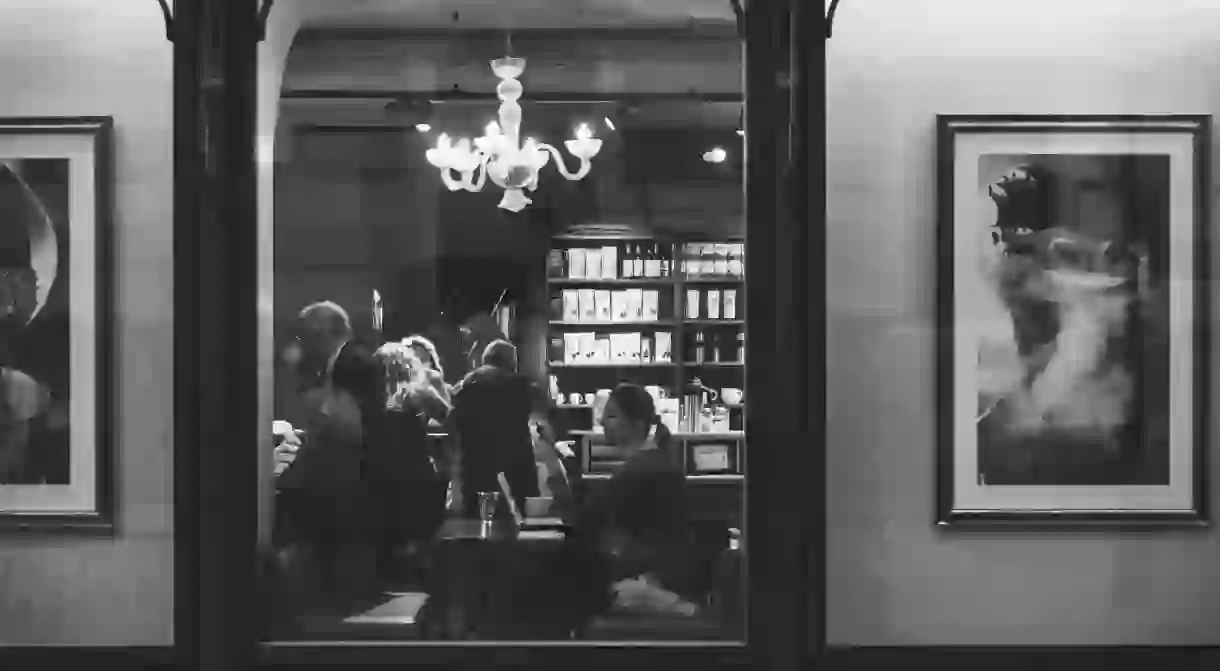The Captivating Character of Viennese Coffee Culture

Although many countries can boast about the quality of their coffee, Vienna, Austria has elevated the beverage to an art form and its consumption to a lifestyle. By purchasing a single cup of coffee in one of the city’s grand old cafes, customers can spend entire days amongst a charming ambience and variety of patrons, making the Vienna coffee house an integral part of the city’s social experience.

When entering a coffee house in Vienna one feels compelled to exhibit the composure that is demanded by this kind of elegant establishment. Often described as ‘the city’s public living rooms’, guests at these typically Viennese gathering spots need only purchase a single coffee, and they are free to linger below the high ceilings, cultivated interior decoration and diverse fellow patrons for the entire day. As an absolute staple of the city’s culture, UNESCO recently named the Vienna coffee house on their list of the ‘National Agency for the Intangible Cultural Heritage’. Within this inventory, the coffee house is described as a place ‘where time and space are consumed, but only the coffee is found on the bill’. Coffee’s place within the hearts of the Viennese is, as it is told, the result of an accident. Its arrival to the city can be pinned down to an exact year, when in 1683, Turkish invaders were forced to flee the town by allied forces head by the Polish-Habsburg army and left behind sacks of the small brown bean. Mistaken for camel feed, the army originally wanted to burn the bags, but instead Polish King Jan III Sobieski passed the beans off to an officer by the name of Jerzy Franciszek Kulczycki. Kulczycki began to experiment with the small hard pellets, adding milk and sugar, and giving birth to the country’s premier beverage. He opened Vienna’s first coffee house shortly thereafter. Although countries like Italy and France can also claim expertise in the production and service of coffee, the experience surrounding its consumption is highly influenced by the culture of each country. In Vienna, it is truly one of the city’s most coveted traditions, and they have crafted the practice of coffee drinking into an art form.

One cannot simply enter the coffee house and request a cup of coffee, as the list of crafted javas is extensive. To order a black coffee guests would need to request a Mocca, otherwise known as a Scharzer, while for a cappuccino like option the Melange, a Viennese classic, would be the closest choice. Other menu items include the Eispanner, served in a glass with whipped cream, the Maria Theresa with orange liqueur and whipped cream, or the Turkische which comes in a copper pot with coffee grounds and sugar. The list goes on and features combinations of coffee, flavoured liqueurs, chocolate, and ice cream. Each cup is served on a silver tray and accompanied by a glass of cold water. Although the wide variety of faces seen within these establishments creates for a welcoming environment, there are certainly advantages to being a regular customer. In Austria, a regular guest is referred to as a ‘stamgast’, although the significance of this word is more complex than its English equivalent. More than just a daily patron of a local London pub, the stamgast in the coffee house is given special treatment. A stamgast can expect the staff at the coffee house to know their regular order, to remember their preferred table and maybe even save it for the customer without a reservation. A more unusual privilege, which may not be typical of all Viennese coffee houses but it certainly practiced in some, is that if a stamgast wants only a couple of bites of cake rather than a whole slice, the staff member and the patron may agree on a type of cake, and share. Each Viennese citizen has their preferred shop, and one’s connection to the cafe is often to the point of possession. Without claiming any authority on the best establishments, here is a list of three well respected Viennese coffee houses to try in Austria’s capital city.

Cafe Central
Cafe Central was opened in 1876 and is perhaps the most grand of all Viennese coffee houses. Impressive polished stone columns support high vaulted ceilings on the interior, and a grand piano sits in the centre of the room. During the 19th century the cafe became a meeting place for the intellectual crowd of Vienna. Renowned figures like Sigmund Freud, Leon Trotsky and Vladimir Lenin were at one time frequent patrons. Then, like today, Cafe Central was a popular destination for customers of all ages, serving the finest homemade pastries and coffee amongst stunning surroundings.

Cafe Weimar
Cafe Weimar was established in 1900 as Cafe Orleans in a building constructed in 1880. The coffee house was renamed Cafe Weimer at the end of the First World War to mark the beginning of the Weimar Republic in Germany. Just as in its early days, the cafe is a preferred spot for artists and visitors to the nearby Imperial Jubilee Theatre. Although decorated with an understated elegance, Cafe Weimar is known for its warmth and welcoming ambience, which make for a classic Viennese experience.

Cafe Hawelka
Cafe Hawelka is an unapologetically Viennese establshiment. Opened in 1939 by husband and wife Leopold and Josephine Hawelka, it was closed at the outbreak of World War II, but remained intact, and the couple took right up where they had left off in 1945. In 1955 the cafe began to be frequented by writers and important thinkers like Heimito von Doderer, Albert Paris Gutersloh and Hans Weigel. Josephine passed away in 2005 following 66 years of service at the cafe. Up until his death in 2011, Leopold positioned himself at the entrance every day to greet his customers. By Ellen Von Wiegand













